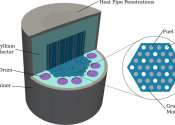New method makes more data available for training self-driving cars
For safety's sake, a self-driving car must accurately track the movement of pedestrians, bicycles and other vehicles around it. Training those tracking systems may now be more effective thanks to a new method developed at ...
Jun 17, 2020
0
79









